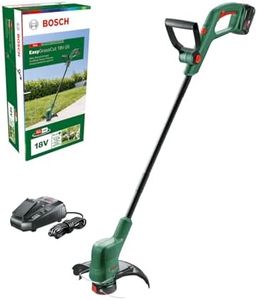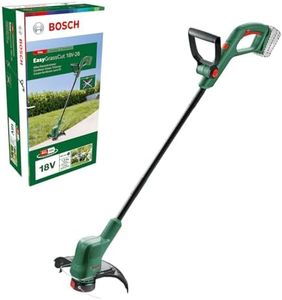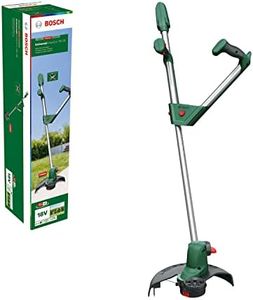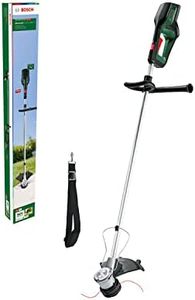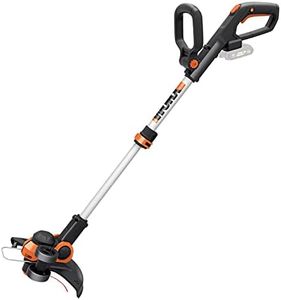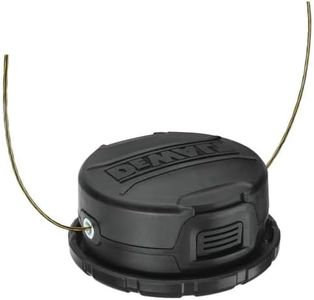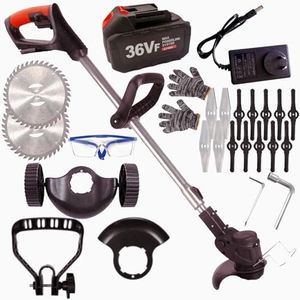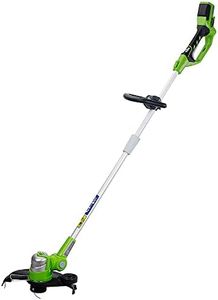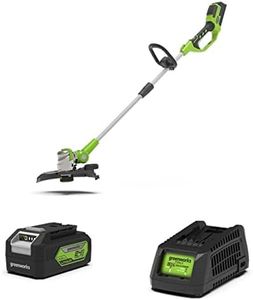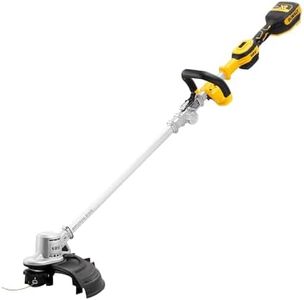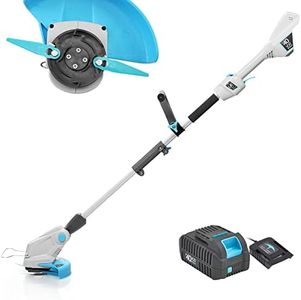We Use CookiesWe use cookies to enhance the security, performance,
functionality and for analytical and promotional activities. By continuing to browse this site you
are agreeing to our privacy policy
10 Best Lightweight Weed Wacker
From leading brands and best sellers available on the web.Buying Guide for the Best Lightweight Weed Wacker
Choosing a lightweight weed wacker (also known as a string trimmer) is all about finding a tool that matches your yard's size and your physical comfort. Since the focus is on a model that's easy to handle, it's essential to pay close attention to features that will reduce fatigue, improve maneuverability, and still provide the performance you need for tidying up your lawn edges and hard-to-reach spots.WeightWeight is how heavy the weed wacker is, and it's a key factor if you want something easy to carry and use for longer periods. Lightweight options usually range from about 4 to 8 pounds, while heavier-duty wackers can go well above that. If you have a smaller yard or prefer less strain on your arms and back, aim for the lighter end of the spectrum. If you have a bigger or more demanding yard (with thick weeds or a lot of trimming), a slightly heavier model might be worth considering for the extra power, as long as you can comfortably handle it.
Power SourceWeed wackers mainly come in three types: electric (corded), battery-operated (cordless), and gas-powered. Corded models are usually the lightest, but you need to deal with a power cord and stay near an outlet. Battery-operated trimmers are also lightweight and free you from cords, but you must keep battery life in mind. Gas-powered versions tend to be heavier but offer the most power and runtime; for most residential users focused on lightweight options, either corded or cordless is best. Think about your yard's size and your preference for convenience versus power.
Cutting WidthCutting width is the size of the area the trimmer can cut in one pass, usually measured in inches. Smaller widths (10-12 inches) make the trimmer lighter and easier to maneuver in tight spaces or for detail work, but they'll take longer to trim large sections. Wider cutting widths (14-16 inches) are better for covering more area quickly, but they might add some weight or feel less nimble. Pick the width based on your yard's size and how much precision you need.
Handle DesignA comfortable and adjustable handle can make a big difference in ease of use, especially for longer sessions. Look for weed wackers with ergonomic designs, adjustable or telescoping shafts, and secondary handles. These features allow you to find the right grip and working height, reducing strain on your wrists and back. If you're shorter or taller than average, or if you have specific comfort needs, prioritize a handle that adjusts to fit you well.
Line Feed SystemThe line feed system is how new trimmer line is fed into the cutting head. Manual feed means you have to stop and pull out more line yourself, bump feed requires you to tap the trimmer head on the ground, and automatic feed does it for you. For lightweight models, automatic or bump feed systems are usually more convenient because they minimize interruptions and keep you moving. If you want the simplest experience, look for automatic feed; if you prefer a bit more control over the line, bump feed is a solid middle ground.
